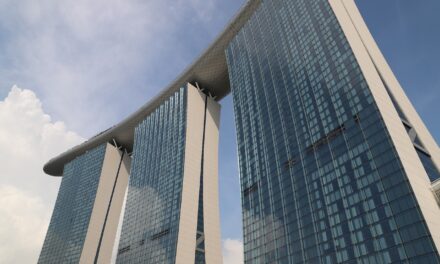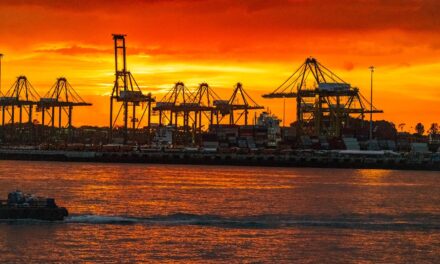As China markets face declines, policymakers implement a stabilisation fund and historic reserve ratio cut, raising concerns about global economic repercussions and impact on Singapore’s stock market.
Last week, a series of economic stimulus measures were unveiled to prop up the struggling China and Hong Kong stock markets.
Shanghai’s SSE Composite Index fell almost 7.0% in the first three weeks of 2024, while the Hang Seng Index saw 11% shaved off in the same time frame.
China anxieties
The poor performance of the two exchanges have been driven by anxieties over China’s economic performance, as well as Chinese government’s capability to guide the country away from a deflationary situation and address the challenges in the property market.
China’s economy grew 5.2% in 2023 from the year before, which was slightly more than the official target of 5.0%, but showed a recovery which was slower than many analysts and investors expected. This data was released on January 17 this year, a day after China Premier Li Qiang’s speech in Davos.
“The Chinese economy is making steady progress and will continue to provide strong impetus for the world economy… Just as a healthy person often has a strong immune system, the Chinese economy can handle ups and downs in its performance,” Li said in his speech.
OANDA Senior Market Analyst Kelvin Wong said in a note that Li’s speech implied that China leadership is comfortable with the current pace of growth trajectory in China, despite it having disappointed analysts and investors.
Shortly after the release of China’s 2023 GDP print and Li’s speech, the SSE hit its lowest point since the pandemic slump in 2020, while the HSI hit its lowest point since October, 2022. Similarly, Singapore’s benchmark Strait Times Index fell to its lowest point of the new year on January 18.
Stimulus measures to fight declines
This has sounded the alarm bells for both the Chinese government and investors alike. China’s top policymakers are now trying to stall the fall of the SSE and HSI with stimulative policies being announced last week.
These include significant advancements in establishing a CNY2.000 trillion, or USD280.21 billion, “stabilisation fund” to support the Chinese stock market.
Additionally, a noteworthy development is the impending 50 basis points reduction in the reserve requirement ratio for major Chinese banks scheduled for Monday, just ahead of the Lunar New Year holidays. This marks the most substantial single RRR cut implemented in the last two years, Wong noted.
Looking at how this might affect the Singapore Stock Exchange, Wong said in an interview with Diplomatic Network (Asia) that it may have some short-term benefits.
“It is likely to have a potential short-term reflexive positive feedback loop back into the Singapore stock market in general due to China being the top trading partner of Singapore; in 2023, Singapore’s total merchandise exports to China, at SGD88.08 billion, exceeded its imports of SGD78.95 billion,” Wong said.
Over the next few months, Singapore investors should watch out for both China’s scheduled rate cut in February, and how that will affect bank loans and the overall economy, as well as international investor confidence following the stimulative measures.
“Firstly, the demand for additional liquidity (the latest 50 bps RRR cut) being injected into the banking system [and] whether there will be an uptick in banking loans such as the velocity of M2 (money supply) as well as reading of the credit impulse index (new loans/GDP) in China,” Wong said.
“Secondly, the amount foreign funds inflows into China’s A and H shares to determine whether international investors’ confidence has managed to see an uptick after these latest slews of policies from China’s top policymakers to address the rout in the China and Hong Kong stock markets.”
Bigger picture
In the bigger picture, it’s unclear if China and Hong Kong’s main stock indices have hit their lowest points.
To tackle the continuous risk of falling prices and economic decline, injecting more money into the system should be combined with direct government subsidies, Wong said.
“[This could] trigger a boost to consumer and business sentiment that is causing the crux of this ongoing deflationary risk spiral in China.”
However, Wong warns, injecting more money into the Chinese banking system without an improvement in consumer and business confidence might result in a situation where there is insufficient demand for bank loans. This situation could lead to a ‘liquidity trap’ in China, reinforcing the ongoing cycle of deflationary risks.
“It will highly be detrimental to the Singapore stock market given that Singapore’s economic growth is largely dependent on external demand and given that China has overtaken the US as Singapore’s top trading partner, a liquidity trap scenario in China with the continuation of weak domestic growth does not bode with the fortunes of Singapore economy,” Wong said.
Singapore’s economy grew by 1.2% in 2023, slower than 2022’s growth of 3.6%.
Beyond China’s borders, Singapore investors should keep an eye out for US foreign policy towards China.
“Right now, there is a high chance of Donald Trump being the Republican party’s choice for its Presidential candidate in the upcoming November US Presidential Election,” Wong said.
“If Trump wins, and he continues to advocate and push for his prior ‘make America great again’ policies which in turn may involve another Trade War 2.0 with China and deepen the current economic woes in China that have been indirectly caused by the ongoing rivalry with the US in the high technology, semiconductors industrialization space.”






